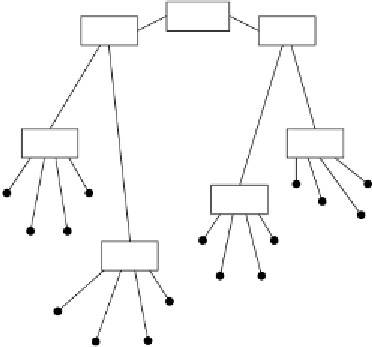Information Technology Reference
In-Depth Information
Bridge
Hub 2
Hub 5
Hub 1
Hub 6
M
P
A
D
Hub 4
N
B
C
O
L
Hub 3
JK
E
H
F
G
Figure 8.8
Two segments connected with a bridge.
The role of a
bridge
, however, is to keep track of the machines
on one (or both) sides. When it receives the material from A in
tended for B or H, the bridge notes that all machines are on one side
of the configuration. There is no need for material to be sent outside
that left segment, so the bridge does not forward A's material to hub
5 for relay onward. In contrast, if A initiated a message to K, then
the bridge would receive the message, realize that A was on one side
but K was on the other, and the bridge would forward the message
for delivery on the other side of the configuration. A bridge for
wards messages when information must go from a sender on one
side to a receiver on the other. A bridge does not forward messages
when both sender and receiver are on the same side.
In effect, bridges allow local traffic on a segment or collection of
segments to stay localized and not interfere with communications
elsewhere. With such technology, communications for a department
may stay within a department, or messages within a college or uni
versity may be contained within that school. A bridge also can serve
as a protection from a malfunctioning machine that fills an Ethernet
cable or network with messages. Although heavy traffic could cause
local trouble on a segment, the bridge would prevent the messages
from interfering with communications over other parts of a network.



